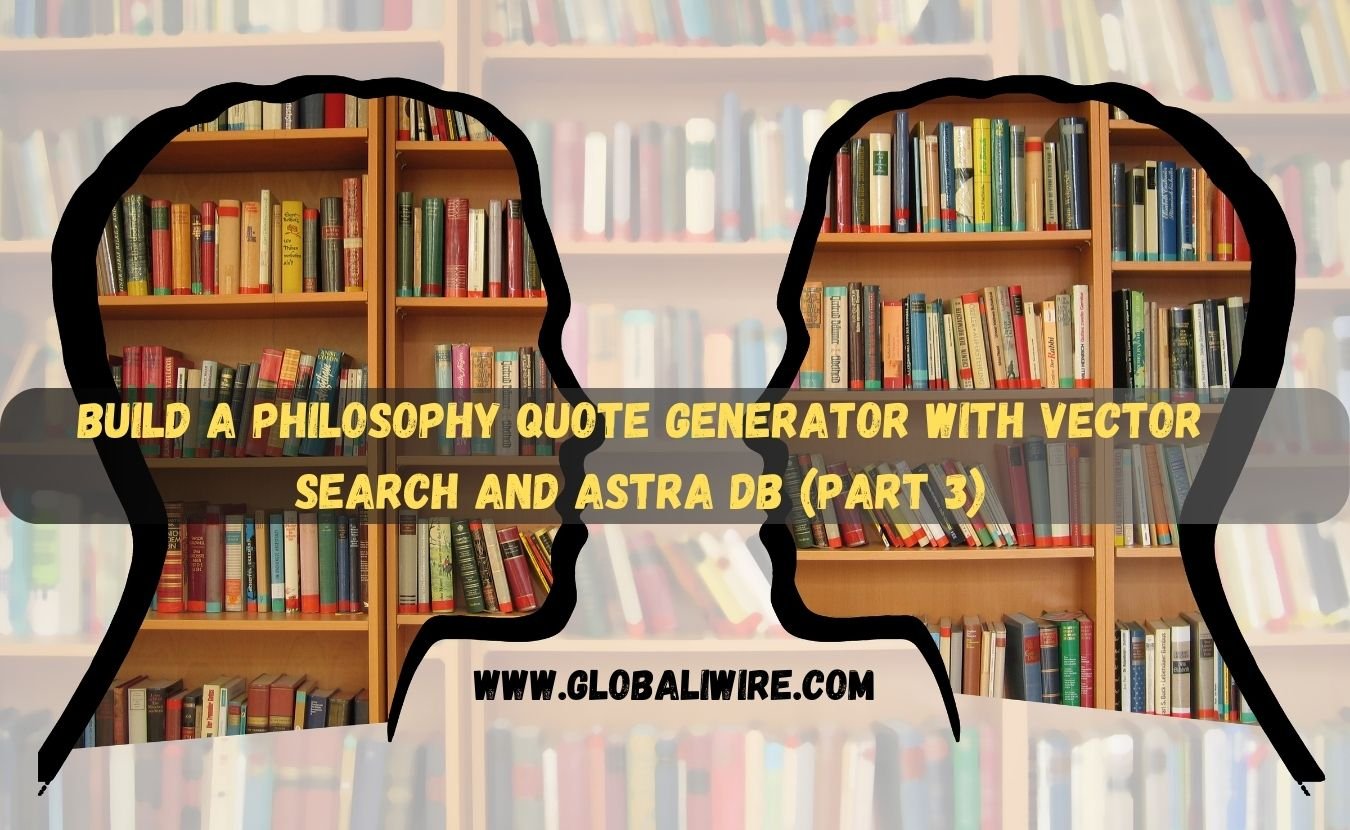In this blog, we are going to tell you how to Build a philosophy quote generator with vector search and astra db (part 3).
This is the mini series about to build the philosophy quotes generator with the help of vector search and astra db
How Does The Philosophy Quote Generator Work?
- Every quote embedded with the embedding system, in vector. These are stored in vectors for later used in cooking. Some metadata, including the writer’s name and some different free computed tags, are saved to allow for search customization.
- To find the quote like the given search quote, the letter is made into an embedding vector. On the fly and this vector is used to save for comparable vectors i.e similar quotes that had been previously listed. By optionally this search can be constrained to the metadata.
- The key factor right here is that “quotes comparable in content” are interpreted in vector space. To vectors which can be metrically close to each other. Accordingly vectors similarity search efficiently implements semantic similarity. This is the important thing that vector embedding is so effective.
- Once every quote is made from the vector area then it will be finalized. Well this example is sphere in view that open AI embedding vectors like most other are normalized to unit duration.
Construct the quote generator
Firstly we build a philosophy quote generator with vector search and astra db (part 3) the application part by entering text and use LLM. To generate a new “philosophical quote” similar to the tone and content to the present entries.
Why Build a philosophy quote generator with vector search and astra db (part 3)?
In normal genAI utilities big language models are hired to provide textual content. For example, solutions to customers’ question summaries are tips based totally on context and beyond interactions. But in many cases one cannot use the large language models (LLM). Out of the container as it could lack the specified area specific know-how. To resolve this hassle at the same time as heading off an frequently quoted (or outraight unavailable) model quality tuning step the approach referred to as RAG has emerged.
- To exercise inside the RAG paradigm, first a search is executed to achieve elements of textual facts applicable to the specific challenges ( as an instance, documentation snippets pertinent to the customer question being asked).
- Then in a second step those pieces of text are placed right into a certain design activated. And passed to the LLM that is advised to craft an answer to the usage of the provided information.
The RAG technique has proven to be one of the very important workhorses to expand the abilities of LLMs. While the variety of methods to augment the powers of large language models (LLMs) is in full fast evolution. Even techniques and highs are also experiencing some kind of comeback right now. RAG is considered as the most important key factor.
Next steps
Bring it to the scaling and production:
- You have seen how easy it is to get started with the vector search using astra DB in only a few traces of code. Semantic text retrieval and era pipeline constructed by us, together with the creation and populace of the storage backend i.e. the vector shop.
- Moreover you hold a free desire as to the precise generation to use.you can attain equal goals whether running with the handy. More abstract cassio library or by means of constructing and executing statements. Immediately with the CQL drivers every preference comes with its advantages and disadvantages.
- If you play to bring this application to a production-like setup there is of course more to be performed. First you have may need to work at an even better abstraction level specifically that provided via the various LLM frameworks available along with langchain.
- We built the capabilities of a rest API to expose we need something like that. This is something you could achieve as an example with a few lines of fastAPI code essentially. Wrapping the generate quote and find quote and the author function seen earlier. As soon as possible we will post a blog on displaying how an API around LLM (large language models) capabilities may be dependent.
- The ultimate attention of the scale of your data. In manufacturing of software, you will possibly manage more than the 500 or many objects plugged in right here. You may need paintings with a vector to keep along with the numerous or thousands of entries. The solution is no astra db is manufactured to address big sizes information with extremely low study and write latencies. Your vector based total software continues to be snappy even after throwing hundreds of records at it.
Implementing quote generation
you will compute the embedding of the quotes and shop them into the vector stores at the side of the text itself, and the metadata deliberate for later use.
To optimize, increase and decrease the calls. you will surely carry out batched calls to the embedding openAI service. The DB writer is gained with a CQL declaration. But because you will run with this specific insertion in numerous instances ( albeit with distinctive values) it is fine to put together the announcement and then just run it again and again.
RAG (Retrieval augmented generation)
It is a natural language processing (NLP) model that mixes the important key components generator and retriever.
- Generator :- This part create new content and includes sentences or paragraphs usually primarily based on LLM ( large language models)
- Retriever :- This part retrieves relevant data from a predetermined set of files or data.
Conclusion
In conclusion, in the installment of this mini series, we can position those ideas to apply by building a vector store and growing a search engine on top of it.
I am a passionate writer and a student who is building his career in engineering. Hello everyone! Myself is Kuldeep Rawat and i write in multiple domains such as technology, entertainment, sports, etc.



